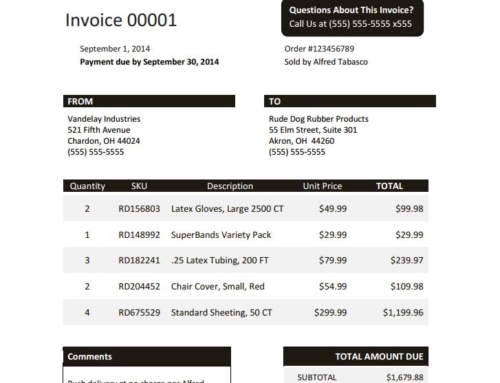There are many things that financial professionals and those responsible for collecting and managing B2B accounts receivable need to do. But with so much going on, there is little time to do it all and there are some fundamental B2B accounts receivable best practices that are sometimes forgotten in the stress of completing the endless list of daily activities. But these are simple and easily-deployed tactics that every credit department can and should use to reduce outstanding receivables.
STEPS FOR HOW TO DO ACCOUNTS RECEIVABLE FOR SUCCESS
1. DEVELOP A PLAN
This plan should be developed in the form of a formalized credit and collection policy which outlines the rules, regulations, and procedures to clearly identify and define what needs to be done and how. Many companies, 20% of them according to the Credit Research Foundation, do not have such plans in place and this can be extremely detrimental to your cash flow. A credit policy eliminates ad-hoc credit management and disconnectedness that breeds inefficient and ineffective processes and makes sure that all employees involved in credit sales and credit collections have documented accounts receivable steps and procedures to follow which has been designed to improve all related business processes.
2. DEFINE KPIS
As a part of writing your policy, you must also develop measurable key performance indicators (KPIs) to ensure your defined processed are producing the desired result. So, what are your goals? They might be:
- To reduce bad debt by X%
- To reduce average outstanding receivables by X% year-over-year.
- Decreased cost of credit by X%.
- Reduction in invoice disputes by X%.
- Reduction in dispute resolution time by X%.
Once you’ve defined your goals, you’ll need to make sure you have the right tools in place to measure them quickly, easily, and accurately. Spreadsheets and your accounting system can make this process long, painful, and depending on what you’d like to measure, even impossible. If measuring your KPIs is tough, you won’t be checking them as often as you should be. Consider a B2B accounts receivable system that generates this information automatically so you always know what’s going on with your accounts receivable and what you need to do to reach individual, departmental, and organization-wide goals.
3. ASK FOR INPUT
Surveys or even informal conversations are useful tools to help identify small problems in the credit and collections process that may be causing big problems. Employees and customers should be surveyed to find out what changes they would recommend to improve the process. Maybe your invoices are coming so late that customers don’t have the time they need to process them within terms, maybe the invoices hard to understand or are often incomplete, contain incorrect information, etc. Your sales team, collectors, and customers will have experience in each area of the credit and collection process and are an untapped well of information that could help you dramatically reduce the number of troublesome late invoices and disputes.




